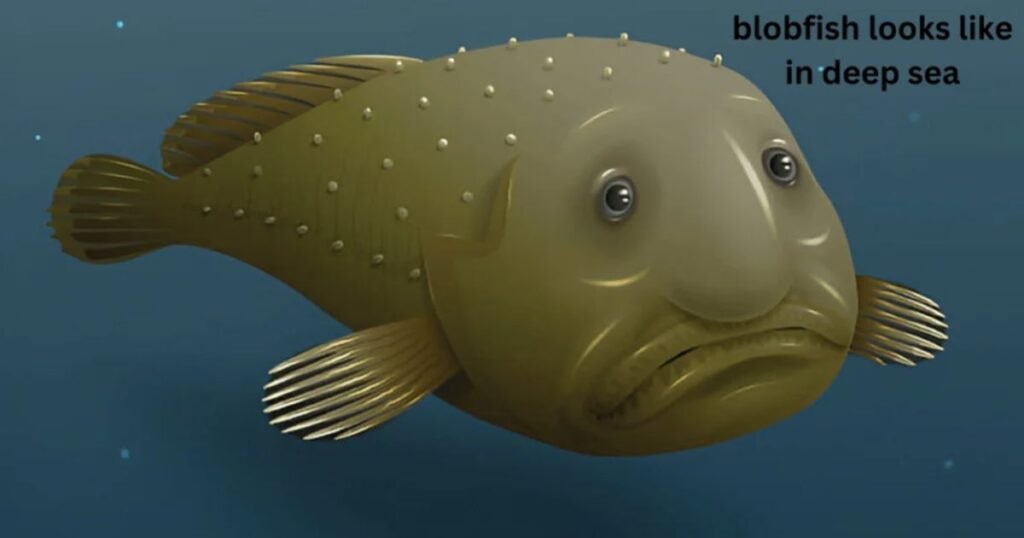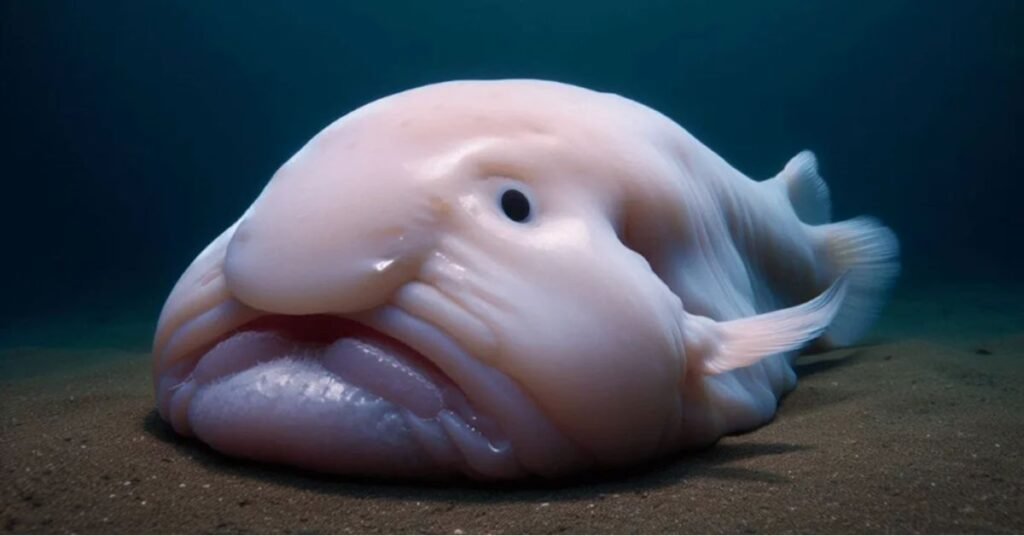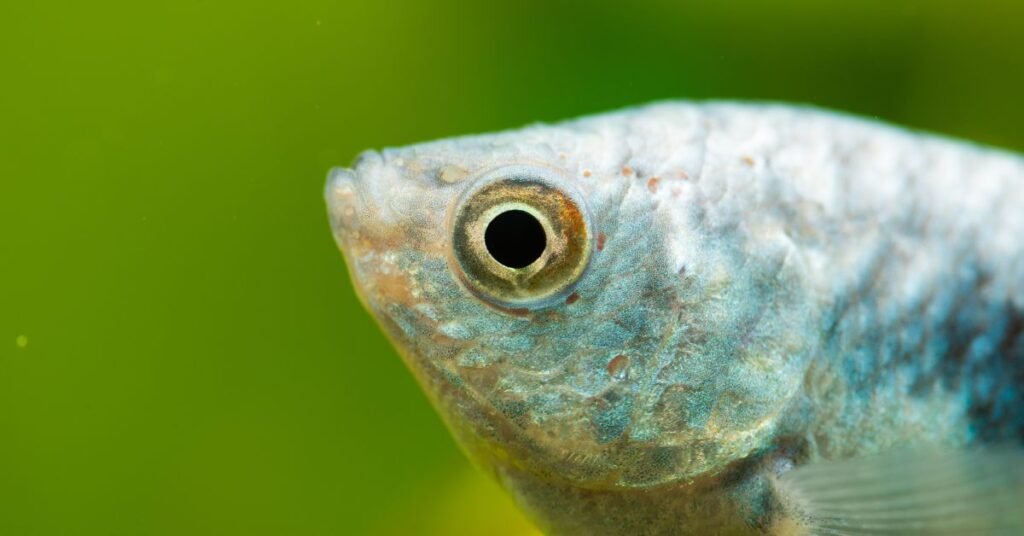That saggy, melted-candle face? Yeah, it’s exactly why the blobfish crushes the competition for “World’s Ugliest Animal.” Some people wince at its jiggly skin. Others pity its permanent frown. A handful defend it like an underrated meme.
You’ll only find this fish way down deep off the coasts of Australia and Tasmania, where the pressure could flatten a submarine. The abyss should crush them. Instead, they dominate it. But when it comes to our world? That’s when this gets its name; it turns into a pale, squishy blob.
In 2013, people voted it the world’s ugliest animal. It is popular in various memes, songs, soft toys, and even TV characters. Today, we’re diving into the weird and wonderful world of the blobfish! You may laugh or feel a bit sorry for it. But believe me, once you catch a glimpse of that adorable squishy face, it will remain with you forever. This fish’s ability to thrive in such extreme conditions is truly inspiring.
Table of Contents
What a Blobfish Looks Like in Deep-Sea Habitats
I once saw one of these fish on TV, and I gaped at the unbelievable sight. It looked like a giant, saggy tadpole. Its pale skin wobbled like jelly. The loose flesh hung off its body, giving it a droopy, almost melting appearance. As strange and kind of sad as it looked, I couldn’t tear my eyes away. It shocked me to my core. Yet I stared, paralysed by its grotesque pull. One look at this fish, and you’ll be hooked—what is that thing?
The blobfish (Psychrolutes phrictus) is a deep-sea fish. It’s often misunderstood. This is because it looks different when it’s out of water. In deep-sea environments, they are usually blue-grey. This fish has a tadpole-like body that tapers towards the tail. This fish has large, black eyes and a bulbous head that accounts for approximately 40% of its body mass.
This is what a blobfish Looks Like Underwater in its Natural Habitat.
In the deep sea, a blobfish looks more like a regular fish. The high pressure keeps its body in shape. It doesn’t look soft or gooey down there. The low pressure causes its body to lose its shape and appear as a blob.
Cultural Impact: In 2003, scientists went on a deep-sea trip and caught a blobfish. They gave it the nickname “Mr. Blobby.” They photographed it and shared it. People all over the world saw the photo and made fun of how the fish looked. Many people made fun of how it looked. This image showcases its unappealing features and sombre expression. That photo made many people think it is an ugly animal. This image played a significant role in shaping the world’s perception of the animal today.

Decompression effect: You know how it gets its famously goofy look? It’s all because of the pressure change! When they come up from the super deep ocean, there’s a big, sudden change. This makes their jelly-like bodies get all squished and lose their standard shape. As a result, the fish takes on a scrawny and distorted appearance.
Why Do Blobfish Appear to Have Big Noses?
Many call the blobfish the “ugliest animal” because of its big, droopy nose. But guess what? That “nose” isn’t real! It’s an illusion caused by big changes in water pressure. In their deep-sea home, they look like regular fish. They have large, round heads but no giant noses.
Its features, especially the snout, expand and droop. This creates that famous “big nose” you see in pictures. Down deep, the pressure keeps their bodies compressed so their noses don’t stick out.
They actually have nostrils on top of their heads, not a true nose like us. That infamous face? Pure physics. When yanked up from the abyss, their bodies blow out like a deflated balloon; the “nose” is really just soft tissue collapsing under pressure. Underwater? They’re sleek. Pressure shapes them.
Blobfish Habitat
Blobfish often build nests in rocky areas deep in the ocean. They look for spots with slightly warmer water and a steady food supply, like near cold seeps. Yet, it is a deep-sea pressure fish that lacks a swim bladder. Instead, it contains soft, gelatinous tissue that is slightly less dense than seawater. Its jelly-like body helps it float. This means it doesn’t need much energy to stay above the ocean floor. Forget scales and strong bones! It actually has a body of weak bones and loose, flabby skin. This design is perfect for its unique deep-sea home. Its bones remain unbroken. It’s a deep-sea masterpiece. This body shape enables them to thrive in the deep sea. They can handle the extreme pressure there.
They often lay eggs in groups, nesting closely together. Each female lays a large number of eggs. They stay and look after them. This kind of care is rare for deep-sea fish. This helps them survive in the harsh, high-pressure world of the deep sea.
Do Blobfish Have Bones?
The ugliest animal, the blobfish, has no real bones. Their bodies are soft and jelly-like. They don’t have a rigid skeleton or backbone. This adaptation helps them survive the extreme pressures of the deep-sea environment.
The extreme pressure in the deep sea would cause their bony skeletons to crumble. Thanks to their jelly-like bodies, they pull off two epic feats: looking like no other creature on earth and effortlessly hovering just above the seafloor.
Some descriptions mention “soft bones,” but the term is a misnomer. They don’t have bones or cartilage. They are not like bony fish or other boneless fish.
Blobfish Eggs
Blobfish are ambush predators. These fish wait at the bottom of the ocean for food to come to them. Female fish lay thousands of eggs at a time. Each nest usually contains between 9,000 and 108,000 pink eggs.
They often nest in groups. Many females lay their eggs together. Sometimes, the nests are only a meter apart. After laying, the female (and sometimes male) stays with the eggs. They stay with them to protect and clean them until the eggs hatch. They guard these nests until the young hatch. When out of water, they look strange.
This is because they decompress quickly, and their bodies are jelly-like. But their actual appearance underwater is more common than that of fish. This is because they have changed to fit in with their surroundings. What they do for a living and how they live in the deep sea changes their bodies.
Baby Blobfish
Like the adults, baby blobfish have smooth, gelatinous bodies. But their exact appearance at hatching has not been well documented. So far, scientists haven’t been able to fully observe their eggs or hatchlings.
Since their relatives are deep-bodied with short snouts and uneven colouring. Their babies might look the same.
They hatch from demersal eggs attached to the seafloor. The young anchor to the bottom during development. Scientists know little about this baby fish because their deep-sea habitat makes study difficult. Additionally, there are no direct images or detailed descriptions of its larvae.
How Do Boneless Blobfish Babies Survive?
How do these baby fish survive the deep sea? Their jelly bodies love the pressure. The darker and deeper, the better. Like adults, these baby fish have soft, gelatinous bodies with no real bones or muscles. Their squishy bodies thrive under the deep sea’s crushing pressure! This intense pressure holds their bodies together and gives them shape. Rip them from the depths, and their bodies implode. They melt into grotesque sludge without the ocean’s brutal pressure.
They have bodies that are less dense than water. They are the ultimate energy savers. Their jelly bodies defy gravity. Why swim when you can float?
What is the rate of their metabolism? Slower than a hibernating snail. Adults and babies alike survive on crumbs. Food’s scarce down there, so they’ve mastered the art of doing, almost nothing. In fact, they might be evolution’s ultimate couch potatoes—doing the least to survive the most.
They can also hold food for a long time. They feed on small crustaceans and organic particles that settle on the sea floor.
Ugly Fish Blob Name
The name “blobfish” aptly captures the appearance and behaviour of this fish. Out of water, the body of this fish looks like a gelatinous blob. This is why many people think it is an odd creature in the ocean. It stands out from all the other sea animals!
Despite this fish’s unflattering name, it plays an essential role in its ecosystem. They live deep in the ocean, but fishermen don’t target them. Why? They have no commercial value—they’re not tasty, not attractive, and frankly, just too odd. Why? Well, they have a weird texture and don’t smell very good. So, they’re not a tasty meal for us!
However, we should not overlook the crucial role they play in its ecosystem, and we should respect its importance.
It’s a shame. But even our strange fish friends have to deal with big problems in the deep sea where they live. Giant fishing nets drag along the ocean floor. This practice is known as deep-sea trawling. These nets can mess up its home. Their habitat is being destroyed like a bulldozer tearing through their home.
They are also caught by mistake by the nets from time to time. These kinds of catches are known as bycatch. A lot of them don’t survive these accidental catches. It means that many of these fish are dying because of what we do, even if we don’t mean to. Human actions are hurting its home. This makes those numbers go down.
Final Thought
The blobfish holds the title of “Ugliest Animal,” which is funny to us but sad for this creature. For example, if someone calls you the ugliest person in the world, would you like it? Of course not! The ‘ugly’ label actually helps. It forces us to care about forgotten species, even the weird ones. Take the fish. Its body? Evolution armed them to crush the deep.
Every ocean dive reveals new secrets. And it’s time we respect that. It shows us that beauty comes in many forms, even if some are unconventional. They isn’t some deep-sea oddball. It’s a wake-up call. When we celebrate its weirdness, we fight for all ocean creatures. Even the ‘ugly’ ones. Because every species holds its ground in the web of life. Lose one, and the whole system trembles.
What color is blobfish blood?
Blobfish blood is colorless or very pale. Deep sea water lacks iron. This keeps hemoglobin low. Without it, blobfish stay pale. Evidence suggests that it is either colorless or a shade lighter than red.



